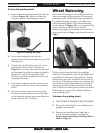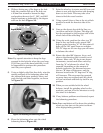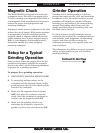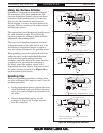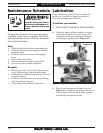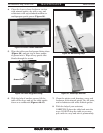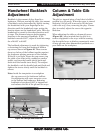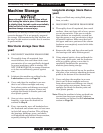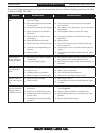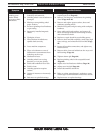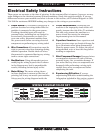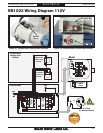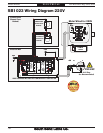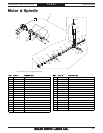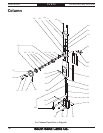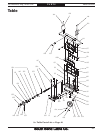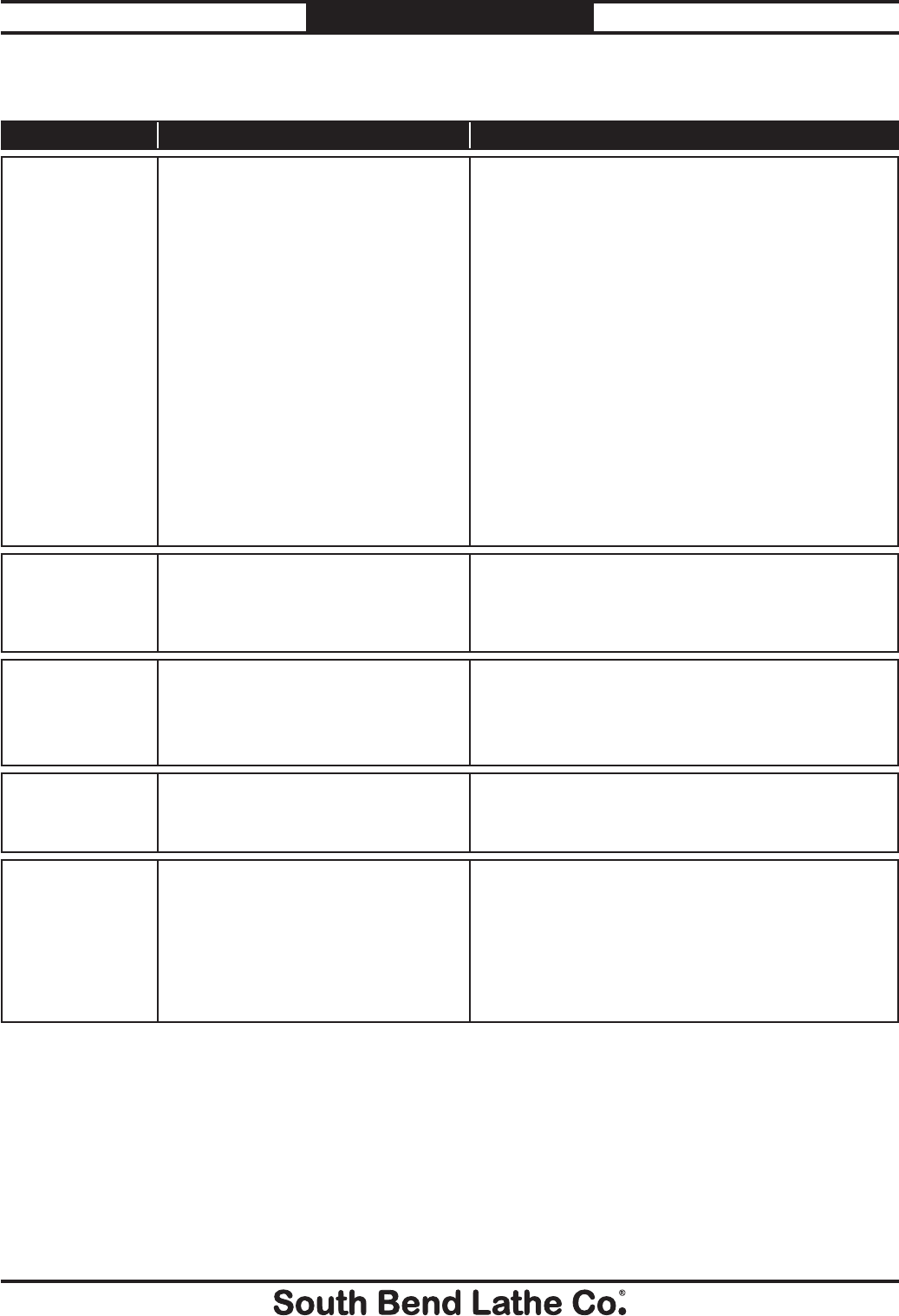
-34-
For Machines Mfg. Since 8/09
Model SB1023
TROUBLESHOOTING
TROUBLESHOOTING
If you need replacement parts, or if you are unsure how to do any of the solutions given here, feel free
to call us at (360) 734-1540.
Symptom Possible Cause Possible Solution
Machine does not
start.
1.
Power supply switched off/has
incorrect voltage.
1.
Switch power supply on/verify voltage.
2.
Blown fuse/tripped circuit breaker
at main panel.
2.
Correct the cause of overload, then reset/replace
fuse or breaker.
3.
Thermal overload relay has tripped.
3.
Allow motor to cool. If necessary, press reset button
inside switch.
4.
Plug or receptacle is corroded or
mis-wired.
4.
Clean/retighten contacts; correct the wiring.
5.
Break or short in wiring; or loose
connections.
5.
Trace/replace broken or corroded wires; fix loose
connections.
6.
Motor ON/OFF switch at fault.
6.
Replace switch.
7.
Motor connection wired incorrectly.
7.
Wire motor correctly (refer to inside junction box
cover or manual).
8.
Contactor not energized/has poor
contacts.
8.
Test all legs for power, test field coil and replace if
at fault.
9.
Motor at fault.
9.
Test for shorted windings, bad bearings and repair
or replace.
Machine has exces-
sive vibration or
noise.
1.
Motor fan rubbing on fan cover.
1.
Fix/replace fan cover; replace loose or damaged fan.
2.
Motor is loose.
2.
Tighten any loose fasteners.
3.
Grinding wheel out of balance.
3.
Dress and balance grinding wheel.
4.
Motor bearings worn or damaged.
4.
Replace motor bearings or replace motor.
Handwheel has
excessive backlash,
endplay, binds, or
is difficult to move.
1.
Leadscrew is dirty or lacks proper
lubrication.
1.
Clean and lubricate the leadscrew and service oil
system (Page 30).
2.
Leadscrew or leadscrew nut worn.
2.
Adjust or replace leadscrew or leadscrew nut.
3.
Linkage bolts, pins, and holes are
loose or worn.
3.
Replace linkage bolts, pins, and re-bush any worn
pin holes.
4.
Longitudinal feed rack and pinion
are worn.
4.
Replace rack and pinion gears.
Machine stalls or
slows when operat-
ing.
1.
Motor is being overloaded.
1.
Reduce depth of cut.
2.
Motor at fault.
2.
Test for shorted windings, bad bearings and repair
or replace.
Motor chatters
during startup or
during operation.
1.
Extension cord (if used) is causing
voltage drop.
1.
Move machine closer to the power source, or use a
larger gauge wire or shorter extension cord.
2.
Low power supply voltage.
2.
Have the power supply verified and corrected by an
electrician.



